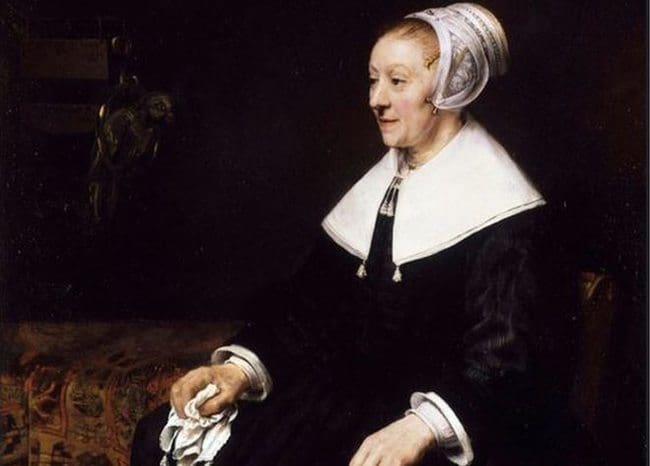A temporary export bar has been placed on Portrait of Caterina, which has been in the UK for more than 250 years.
A UK buyer is being sought to come up with the £35m price tag for the painting, which dates from around 1657.
Culture minister Ed Vaizey said he hoped the bar would stop a “fascinating glimpse into history” going overseas.
The painting is considered to be one of the country’s best-known Rembrandt works.
“This Rembrandt painting… provides a fascinating glimpse into history, helping us to better understand how society and art have evolved over the centuries,” said Mr Vaizey.
“It’s important that paintings, especially one as famous as this, are available for our students to learn from.”
The subject of the portrait, Catrina Hooghsaet, was a wealthy Amsterdam Christian Mennonite who was married but separated from her husband – showing her strength of character and independence at such a time.
The portrait also features her pet parrot, which was included in her will.
The precision of Catrina Hooghsaet’s features in the painting suggest it was created earlier than the 1660s
Later Rembrandts in the UK, such as the depiction of Jacob Trip and his wife Margareta de Geer, were painted in a much rougher style.
The Caterina portrait has been on loan and on public display at the National Museum of Wales, Penrhyn Castle, North Wales – for which it was bought in 1860 – and at the Ashmolean Museum, Oxford.
Mr Vaizey decided on the export bar after a request from the Reviewing Committee on the Export of Works of Art and Objects of Cultural Interest (RCEWA), administered by Arts Council England.
The decision on the export licence is deferred until 15 February 2016. The time could be extended until 15 October if a “serious intention” to raise funds to buy it for the full £35m becomes clear, the DCMS said.


